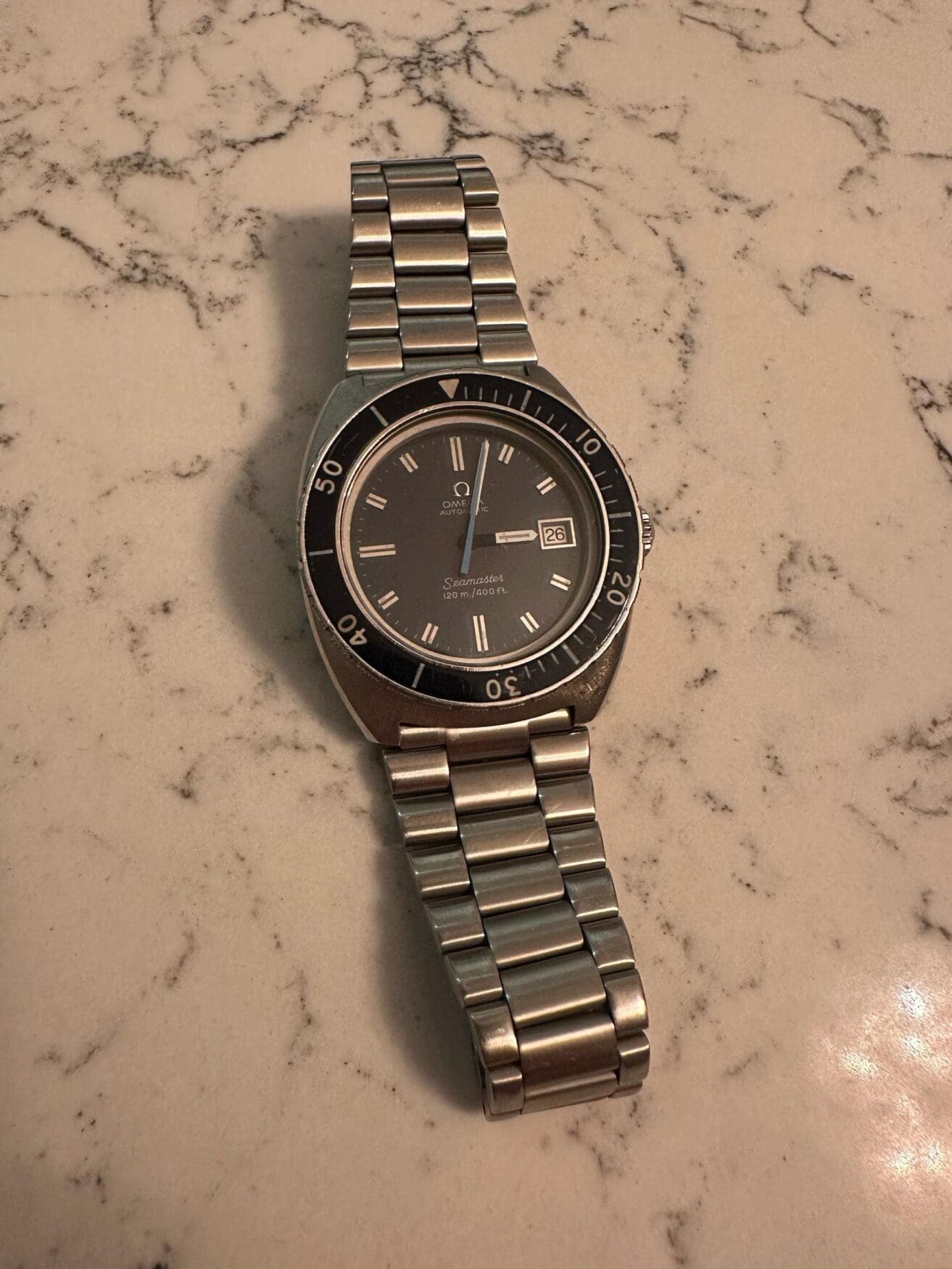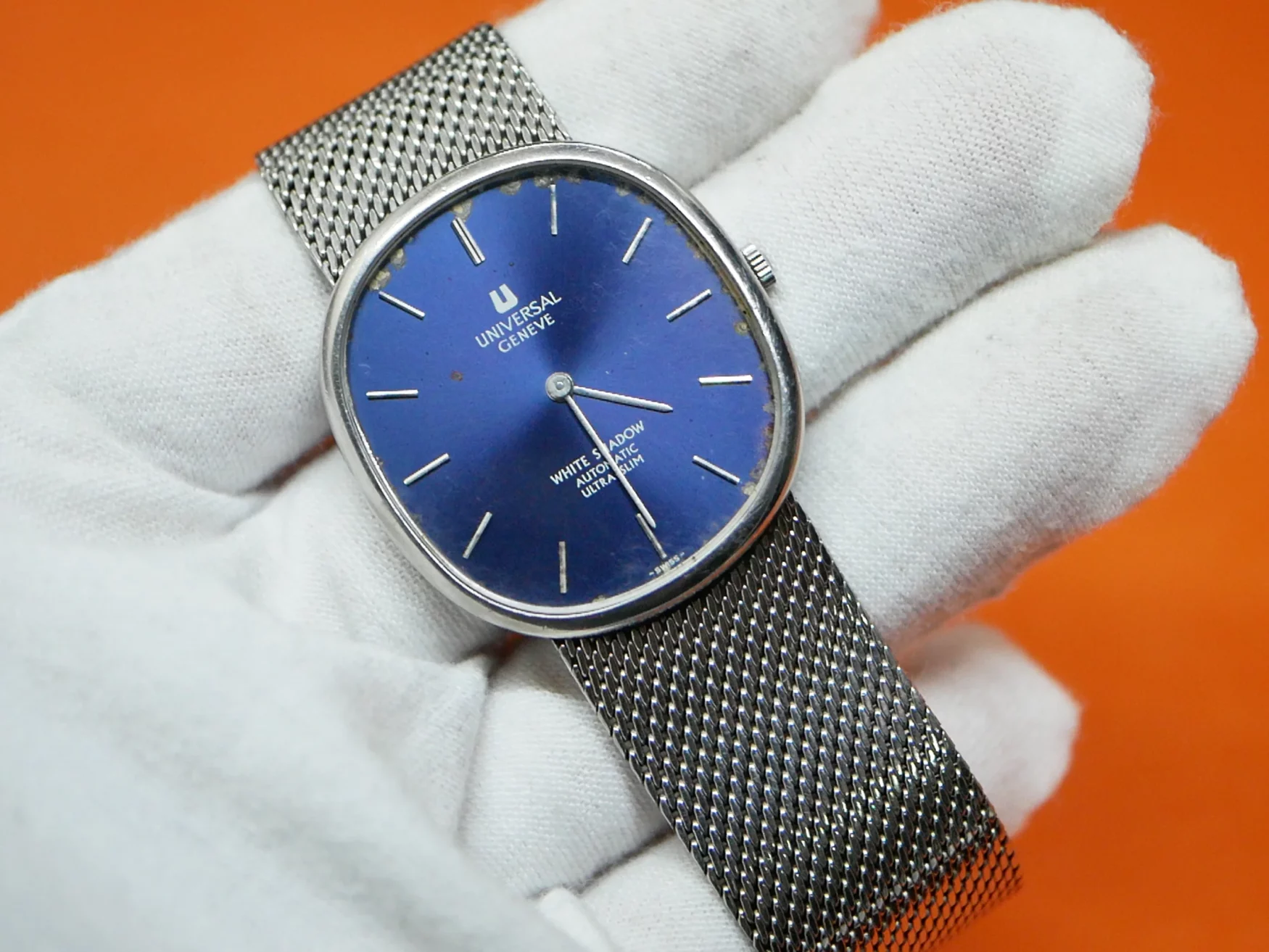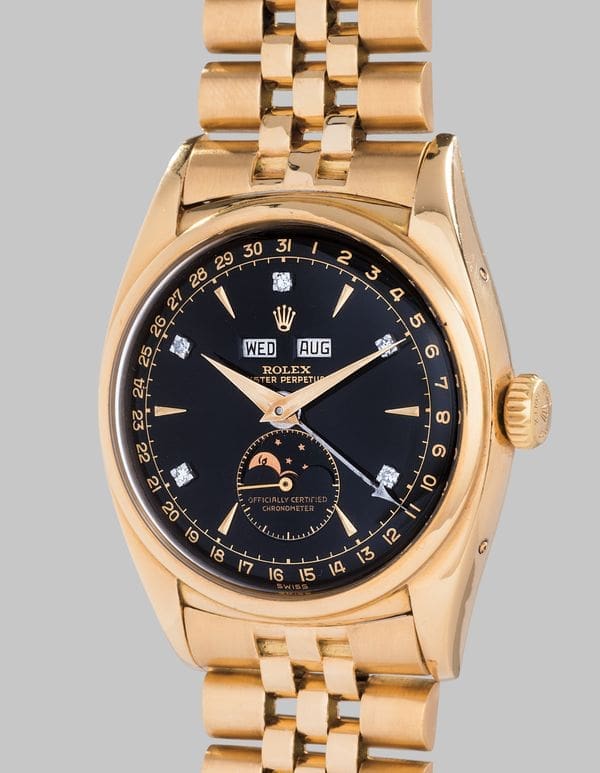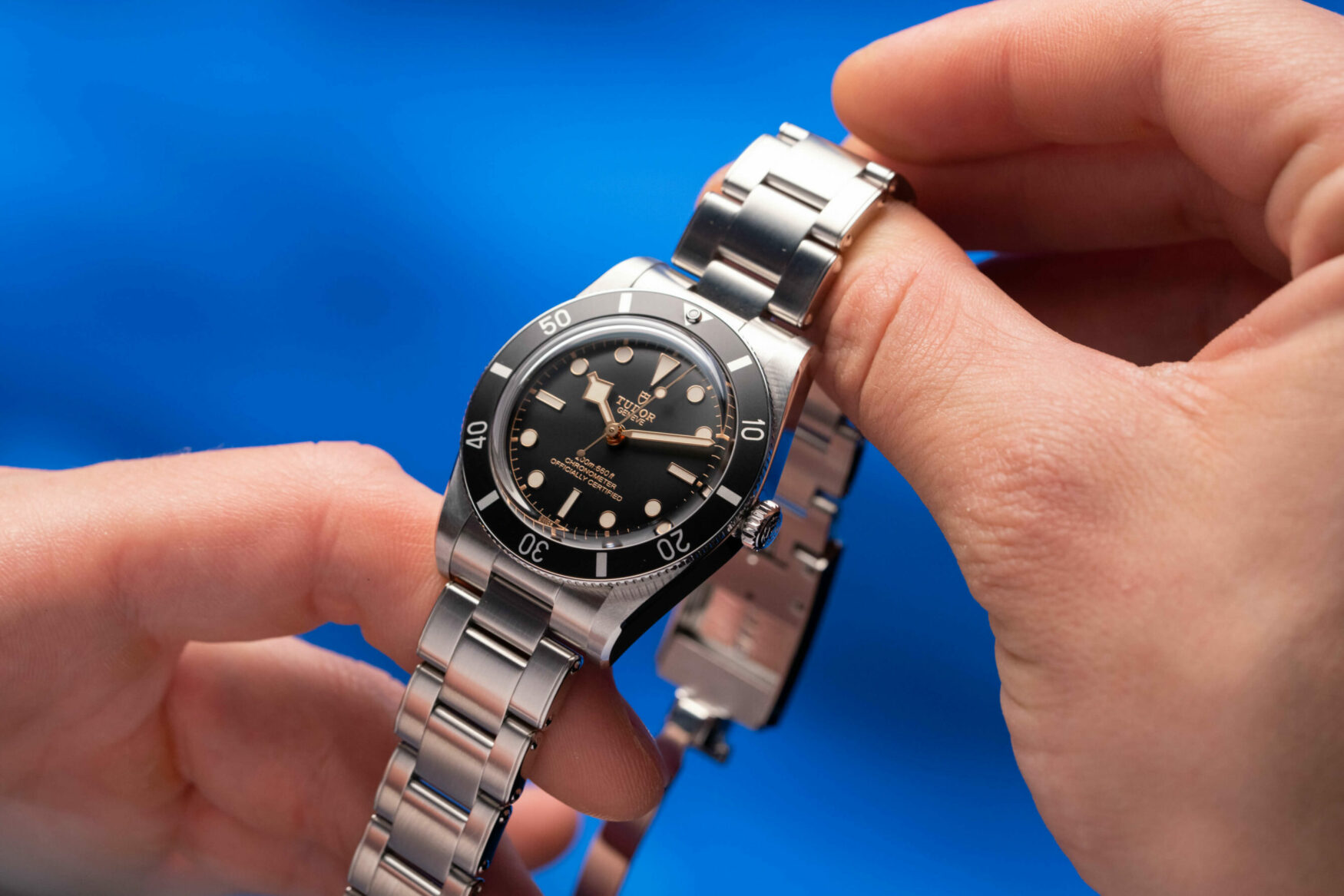Get to know our new UK-based Managing Editor: Russell Sheldrake
Zach BlassLast month during our Time+Tide 10 celebrations, we reflected on the past decade of Time+Tide and how much it has grown. But, just a couple of weeks later, it is time to look forward. And, speaking of growth, we recently announced our first UK-based hire, our new Time+Tide Managing Editor, Russell Sheldrake. While just 28 years old, Russell has honed his craft as a watch journalist over the last seven years and has built up a celebrated reputation as an authority within our space. While we have crossed paths in the last three and a half years I have been working with Time+Tide, my recent trip to London was a great chance for us senior editorial members to hang, have a pint, and really get to know each other ‘in the metal’. But, I want to make sure you all get to know Russell as well. So, as if my phone were a fly on the wall, we recorded our chat which you can dig into below.
Zach Blass: How did you get into the watch industry?
Russell Sheldrake: During my third year at university, I picked up a Saturday job working for a high street jeweller called Ernest Jones, part of the Signet group that just got bought by Watches of Switzerland. I was the only person working there at that time that didn’t really have any interest in engagement rings. And so they said, “You can go and work on watches.” And so I discovered watches, and fell in love with them. As everyone else in this industry, I started reading more and more watch media. And here I am.
View this post on Instagram
ZB: When did you become a watch journalist?
RS: Straight out of university, I got my first paying job in journalism at Business Insider. I did what’s called their six-month fellowship program. So worked there for six months, and then straight after that, worked for a gentleman’s luxury lifestyle magazine here in London, called Gentleman’s Journal. And while I was there, became their watch writer. Again, no one else there was interested in watches. And I put my hand up and volunteered to cover that desk. And watch brands paid the bills of the magazine. After I worked there for 18 months or so, I went freelance for a good 18 months again, writing for anyone that paid, but again, mainly watches, a bit of travel, a bit of food, whatever would pay. Then, I started my time at A Collected Man where I became the Editor, revamping their editorial output, starting their long form journalism they became known for, and built the team up. After being there for three years, I went on to SJX. I was there for a very informative six or seven months. And now I’m here.
View this post on Instagram
ZB: That covers your origins with watches professionally, what about on a personal level? What is your first memory in terms of a watch and being interested in one?
RS: Definitely my Dad’s 1970 Omega Seamaster 120. And I just remember being a kid, sitting in the front seat of the car and playing with the bezel. I couldn’t have been older than six or seven years old. My fascination with watches likely began there, but sadly, at least for me, that watch is in now my brother’s possession.
ZB: What was your first watch?
RS: I don’t really claim it as my first watch, but it was a Nixon I purchased when I was fourteen or so. I can’t even remember the name of it, but it was completely blacked out. Black everything, black hands, black dial, black case, etc.

ZB: What was the catalyst, if you can remember, of getting that watch?
RS: There was no real drive for it. I don’t even remember buying it. I remember having it, I remember wearing it so often I wore out the strap. I didn’t even take it off to shower. It’s just one of those things I didn’t really care about. It was when I got my Hamilton that I started to care.
ZB: That leads me to my next question, what would you say was your first serious ‘big boy’ watch?
RS: My first serious watch was a Hamilton Jazzmaster that my parents got me for my 21st birthday. I got it when I was working at Ernest Jones through a staff discount. It was my 21st birthday coming up, and my manager knew that. And so he had encouraged me just to go onto the catalog and just scroll through it to find something that I wanted. And what I came across I fell in love. I don’t really wear it very often anymore, but it was classical, it was clean. It had a hint of something different about it because it had a stainless steel case with a rose gold bezel, hands and indices. It had the day and the date, so I was like, that’s super functional. I’m going to use that all the time.
ZB: What would you say is currently your collecting style and does it have a particular focus? What are the watches that you’re drawn to the most now? Is it a particular category, aesthetic?
RS: Right now I would say I’m trying to fill holes in my collection. I’m currently short of a true dress watch. A true minimalist, sleek under cuff, svelte kind of piece. And so I’ve got my Chrono24 notifications set up for a Universal Genève White Shadow. It’s essentially an Ellipse, but I want the stainless steel mesh bracelet, blue dial. If anyone has one for under £1,000, please let me know.

ZB: With the recent Breitling acquisition, it’s going to be challenging now.
RS: It’s tough. One went online today and it was £2,000.
ZB: Where are you leaning towards now in terms of what are the things that interest you more? Is it sports watches or as you’ve said, these dressier pieces? We’re journalists, we don’t have expansive budgets, so I’m not suggesting you can buy everything. What piques your interest the most in terms of a watch and wanting to hunt after it?
RS: Yeah, the problem is that my taste far outweighs my budget. But I think what really interests me now is the stories behind watches. So the thing that really interests me about the Universal Genève is the fact that when it came out, it came out with the caliber 2-66 movement inside of it, an in-house micro rotor. And it was the thinnest automatic movement in the world when it was released. That’s such a cool story to tell when someone sees your watch. And this is probably out of necessity, but when someone sees my watch and says, ‘Oh cool, tell me about that,’ I want to have something to say about it. So I’m less drawn to styles, aesthetics, functions, and more so drawn to stories and narratives that I can pull out from a watch that are built into it.
View this post on Instagram
ZB: As we are talking about the stories attached watches, are there any stories attached to the watches in your collection that you’re willing to share?
RS: There is a bit of a story behind my Tudor Submariner. So it’s technically a birth year watch for me. The reference was released the same year I was born in 1995, and the watch was sold a year later. It was sold to, what I assume, is a lovely Japanese man in 1996, who looked after it very well. Well enough for me to buy it two years ago. I was working at A Collected Man at the time. And as I told you, it was hard, yet rewarding, work, and it was the kind of job where you put a lot in and you really see the results at the end of it. It was great, but it opened my eyes to different possibilities in the watch industry. This watch was one of the opportunities that the company opened up to me. And it felt like I had earned the watch at that point, because until then, I was scared to buy a watch over £1,000, because I was like, I’m just a measly watch writer. I don’t deserve that.
ZB: And once you break that seal, it becomes very easy to do.
RS: Oh, yes. Oh, yes. Yeah, that’s well and true broken now. So yeah, I think I’ve finally convinced myself through my work and through seeing the reception of it, that I was worthy of that watch in a sense.
ZB: What watch would you say you wear the most?
RS: My Oris Sixty-Five I am wearing right now.
View this post on Instagram
ZB: Why do you find that you gravitate towards the Sixty-Five as your go-to?
RS: Because it goes through everything and anything. I can punch through a brick wall, and my hand will come off worse than that watch. I’m dead certain of that. Its 36mm size fits me really well and the fact that the bracelet tapers even more than most, I absolutely adore it and its very vintage in feel. And I’ve worn this with T-shirts and shorts, with suits, with shirts and jacket, whatever. It goes with anything. Living in London, I also feel safe with this watch. No one’s chopping my hand off for this watch.
ZB: Being your go-to daily wearer, drive-the-hand-through-the-wall watch, are there any stories that you can share about this watch?
RS: I actually bought this Oris shortly before my partner and I went on our first international holiday together. We went to Croatia, Dubrovnik and had a fantastic time, but we both love to be active and get outdoors. And in my youth, I was quite a keen kayaker, so we went kayaking with this. And not only did it deal with everything that I threw at it perfectly, but the edge of the bezel is bronze, not rose gold. So it took on this amazing green, chunky patina on that edge.
ZB: Do you like it when bronze goes green like that?
RS: I love it when it’s an accent. If it’s your entire watch, it’s absolutely gross. As an accent like this, I think it’s quite cool. There were times when I could rotate the bezel and you’d have green dust coming off and everyone was like, “Ah, that’s gross.” I was like, “Man, it’s cool. It’s the seawater from Croatia.”
ZB: Okay, rapid fire. What’s your favourite watch brand and favourite complication?
RS: Okay, these two are going to be diametrically opposed. My favourite brand is Tudor, and my favourite complication is an annual calendar.
ZB: Why is Tudor your favourite brand?
RS: I love what they do. I love how they do it. I love how they speak to their audience. I think that there’s a genuine connection there.
ZB: Why is the annual calendar your favourite complication? Why an annual calendar and not a perpetual calendar?
RS: Because the annual calendar does not need to exist, but it does. And it was invented after the perpetual calendar. It is the paradox of complications and as an Englishman, I love to be difficult. I think the annual calendar in essence is all you need. You don’t need a perpetual calendar. You are not going to live long enough. The watch isn’t going to live long enough. Annual calendars are useful and they have a cool story behind them. You’d assume that as annual calendars are less complicated they came first and perpetual calendars later. No. The perpetual calendar was invented decades, maybe even a century, before the annual calendar was. How is that not a cool story for a complication… I mean, come on.
ZB: So, we’ve tackled what you like. What would you say ‘tweaks your tourb‘? Or, in Love Island terminology, what gives you the ick in terms of watch design elements?
RS: Terrible typography really bugs me. When you have a watch dial, and these are small spaces, right? We look at pictures of them blown up and we think they’re huge. Really they’re 30mm across at best. And when you’ve got three to four different typographies on one dial I can’t deal with it because it hurts my brain to try and figure it all out and read it.
Another thing that irks me is overly thick timepieces, girthy watches piss me off. I feel like it makes it impractical to wear, uncomfortable, and at the end of the day, these are pieces that are supposed to live on your skin and you’re just going to make this watch completely unusable for most people who wear long sleeves, it’s stupid.
ZB: So, I think we can agree the bar for a watch to be too thick depends on the category of watch. When would you say a dive watch is too thick? When is a chronograph too thick?
RS: I think we have seen in the last four or five years especially, that watches don’t need to be as thick as we might think. If you’re going to hand me a watch and say, “oh, this is 14mm thick” and I ask why and you’ve got no good comeback, it irritates me. So, if a brand has just cheaped out on their case production, if you’ve just slapped a bubble crystal on there because you think it looks cool, then straight in the bin in my book. To actually answer your question though, I think above 14mm is too thick.
ZB: Agreed. Ok, to close things out, what is your grail watch?
RS: My grail is a Rolex ref. 6062.

ZB: For the people who don’t know that reference, explain a little bit more about the watch and why that’s your grail.
RS: Well everyone should know it, but it is a… To not mince words, a million dollar watch. The most famous is known as the Bao Dai and it sold at Phillips a few years ago for way too much money. But it is a Rolex made in very small numbers, oyster case, triple calendar, moon phase. And to me it is the perfect combination of utility and elegance. They can fly under the radar because you can see the combination of case and dial and you’d be like, I’m not sure that is Rolex. You’ve got this triple, complete calendar, moon phase, and a few have these star dials, where the indexes are applied stars. Gorgeous, gorgeous. Yeah, the kind of watch, I’ll never own, but I love to handle them and just to admire it, because capture a unique moment in the biggest watch brand ever.







